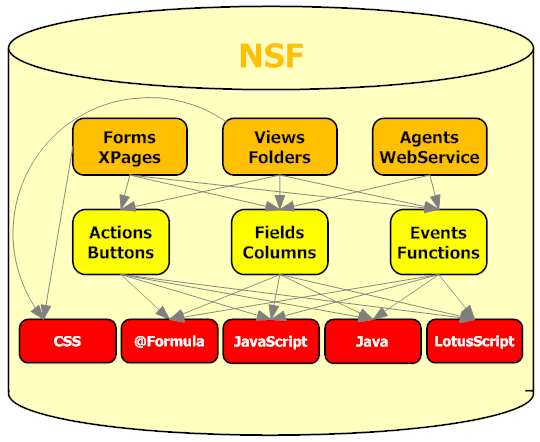Estimating Notes projects
Estimating software project cost and duration seems to have parallels with the local weather reports: You simply can't rely on them. Waterfall project approaches are partly to blame. Estimating the amount of work units for a requirement is another. How much work is " The system needs to be user friendly"? For the sake of this post lets us presume your have a magic box, typically labeled experience, either explicit or implicit, that gives you an insight how much code you need. Once you know how much code (a.k.a. LOC or "lines of code") you need to write, estimation becomes manageable. A good tool to estimate is COCOMOII. With the LOC, COCOMOII and your average hourly cost you can estimate the cost easily (Thanks Mitch).
However using a visual development environment (Visual Studio, Eclipse, Adobe Studio, Domino Designer) makes things a little more complicated. A form or a view you draw is not a line of code. The UML model you paint (that will turn into a database schema and code classed via generation) is not a line of code. So you need to expand your mental estimation model slightly. There are two new terms to get familiar with:

The orange boxes are most likely what you will get out of the discussion with the business users, including some of the yellow boxes. For the red ones you can directly insert lines of code. How do you estimate your projects?
However using a visual development environment (Visual Studio, Eclipse, Adobe Studio, Domino Designer) makes things a little more complicated. A form or a view you draw is not a line of code. The UML model you paint (that will turn into a database schema and code classed via generation) is not a line of code. So you need to expand your mental estimation model slightly. There are two new terms to get familiar with:
- LOC_TE = "Lines of Code - Time Equivalent": The time for painting one form is equivalent to writing how many lines of code?
- LOC_AL = "Lines of Code - Avoided Lines": When you paint one form how many lines of code can you avoid to write? The whole promise of any visual environment is, that LOC_AL > LOC_TE. This probably varies from platform to platform and makes an excellent subject for a bar brawl between competing developer camps. I guess you won't find much information about that ratio since nobody ourdays would afford to build a system twice.

The orange boxes are most likely what you will get out of the discussion with the business users, including some of the yellow boxes. For the red ones you can directly insert lines of code. How do you estimate your projects?
Posted by Stephan H Wissel on 07 December 2008 | Comments (1) | categories: IBM Notes Lotus Notes Show-N-Tell Thursday SYWTBADD